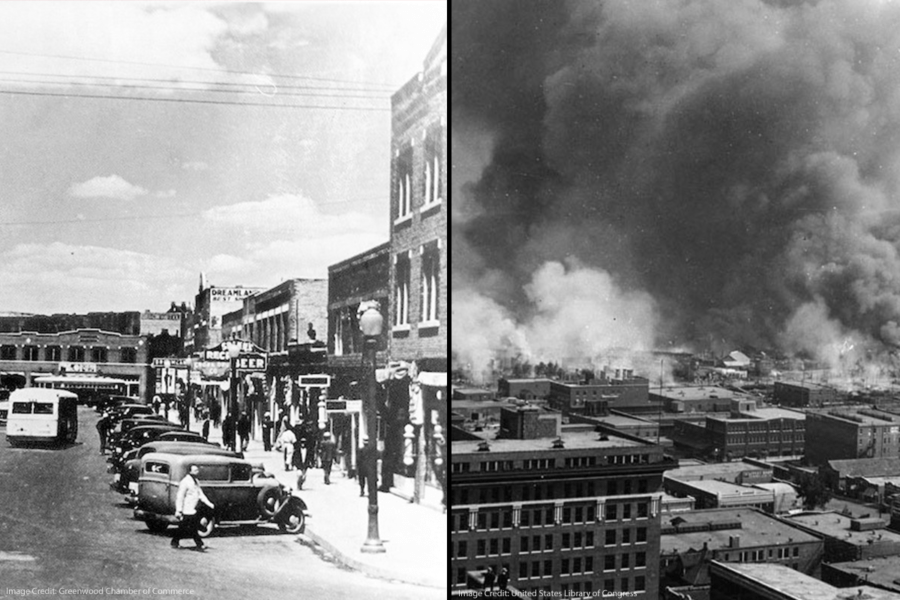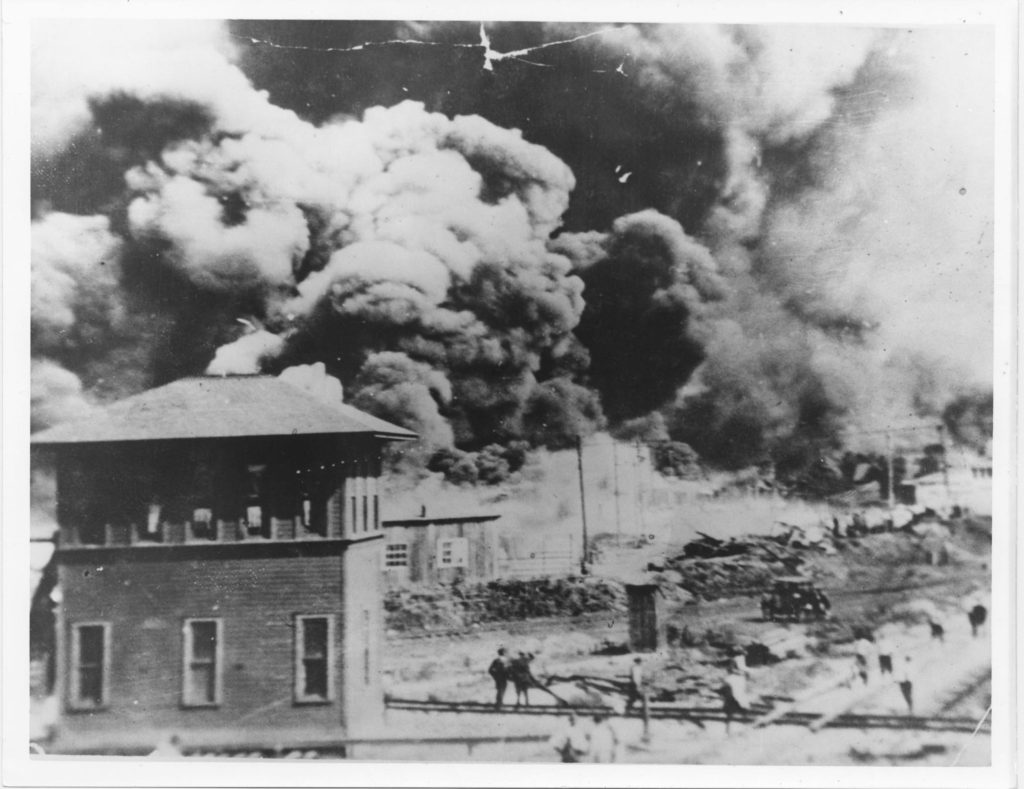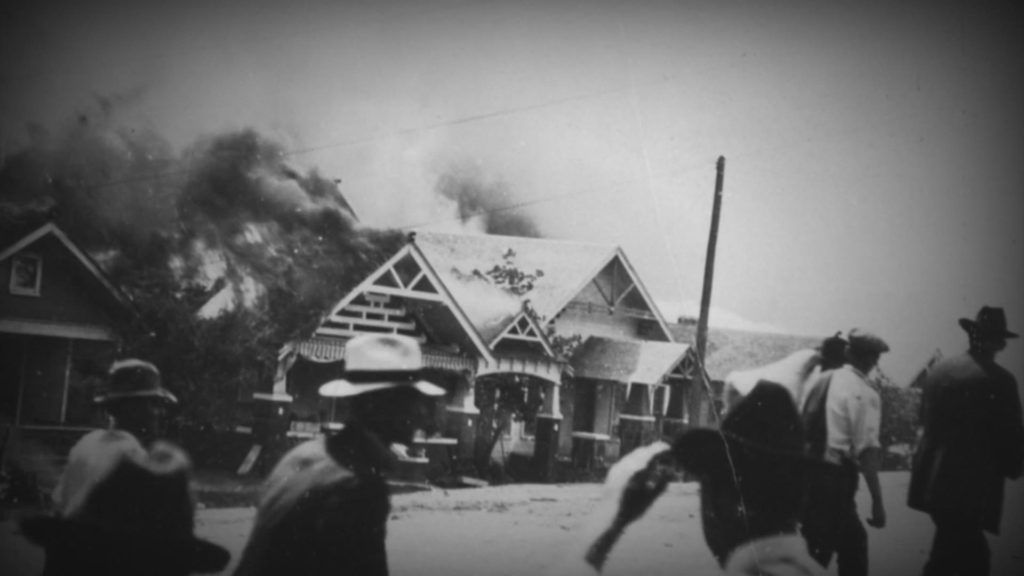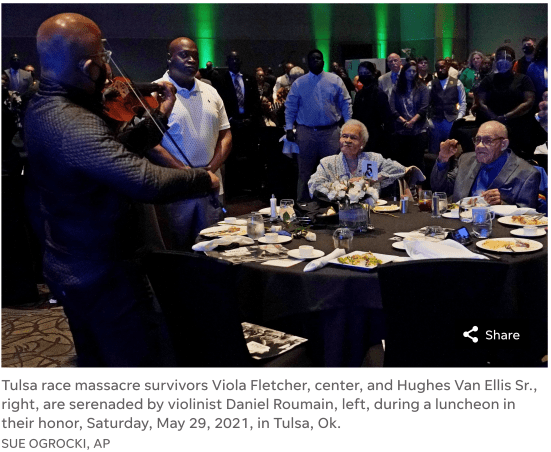The Tulsa Race Massacre, 100 Years Later
The Tulsa Race Massacre of 1921 saw between 39-300 people killed and 10,000 African Americans made homeless after two days of state violence. So why have we only begun to hear about this recently? Dr David Scott explores. This week commemorates the 100th
anniversary of the ‘Tulsa Race Massacre’ in Greenwood, north Tulsa, Oklahoma, which took place between 30th May and 1st of June1921. Greenwood, which was a prosperous Black community (known as the ‘Black Wall Street’), was decimated by two days of officially sanctioned terror. Somewhere between 39–300 people died and up to 800 people were injured. The exact number of deaths is not known and the search for hidden mass graves continues to this day.
Burned to the ground
According to a later Red Cross estimate, some 1,256 houses were burned; 215 others were looted but not torched. Two newspapers, a school, a library, a hospital, churches, hotels, stores and many other Black-owned businesses were among the buildings destroyed or damaged by fire.
By the time the National Guard arrived and Governor J. B. A. Robertson had declared martial law shortly before noon, the riot had effectively ended. Though guardsmen helped put out fires, they also imprisoned many Black Tulsans, and by June 2 some 6,000 people were under armed guard at the local fairgrounds.

10,000 Homeless
10,000 African American people were made homeless as large parts of Greenwood district burned to the ground, some of which may have been caused by bombs from private aircraft. There were no criminal prosecutions of the white residents who perpetrated most of the violence, or the state officials who armed them, but thousands of African Americans were interned in the days following the massacre. The long-term harms generated by the Tulsa Race Massacre (and its subsequent cover-up) were not just physical but also psychological and financial, such as the moral injury to survivors, and loss of wealth.

For decades, there were no public ceremonies, memorials for the dead or any efforts to commemorate the events of May 31-June 1, 1921. Instead, there was a deliberate effort to cover them up. The Tulsa Tribune removed the front-page story of May 31 that sparked the chaos from its bound volumes, and scholars later discovered that police and state militia archives about the riot were missing as well. As a result, until recently the Tulsa Race Massacre was rarely mentioned in history books, taught in schools or even talked about.
State complicity with white supremacism
Despite its shocking nature, for decades the Tulsa Race Massacre remained hidden from history. Key documents were destroyed, and it became something of a taboo subject in Tulsa. The silencing and denial were profoundly harmful, preventing healing or holding those who did wrong to account. Scholars began to delve deeper into the story of the riot in the 1970s, after its 50th anniversary had passed. In 1996, on the riot’s 75th anniversary, a service was held at the Mount Zion Baptist Church, which rioters had burned to the ground, and a memorial was placed in front of Greenwood Cultural Center.

That is when things finally began to change.A new public inquiry (which reported in 2001) was launched, corroborating the claim of state complicity with white supremacism. More recently the portrayal of the massacre in two HBO series – Watchmen, broadcast in late 2019,and Lovecraft Country , broadcast in 2020 – resulted in renewed national and international attention. There have been numerous interventions commemorating the massacre, including documentaries like Tulsa: The Fire and the Forgotten the belated hearing of testimonies of survivors Viola Fletcher, Hughes Van Ellis and Lessie Evelyn Benning field Randle in US Congress; and the extensive curating of historical evidence at an online archive #TulsaSyllabus. In 2001, the report of the Race Riot Commission concluded that between 100 and 300 people were killed and more than 8,000 people made homeless over those 18 hours in 1921.

100-Year struggle for truth
Belatedly learning today about the terrible events in 1921 may help foster acknowledgement and generate a new willingness to put right past wrongs. Whilst the Tulsa Race Massacre is not the only hidden historical atrocity perpetrated and condoned by state authorities, undoubtedly the resurrection of interest demonstrates the crucial importance of hearing and listening to the voices of victims and survivors, and acknowledging the harms and injustices they have suffered. Ultimately, the 100-year struggle for truth, recognition and reparations by survivors and descendants provides inspiration for people all over the world seeking redress, healing and genuine accountability for social harms and state violence.




